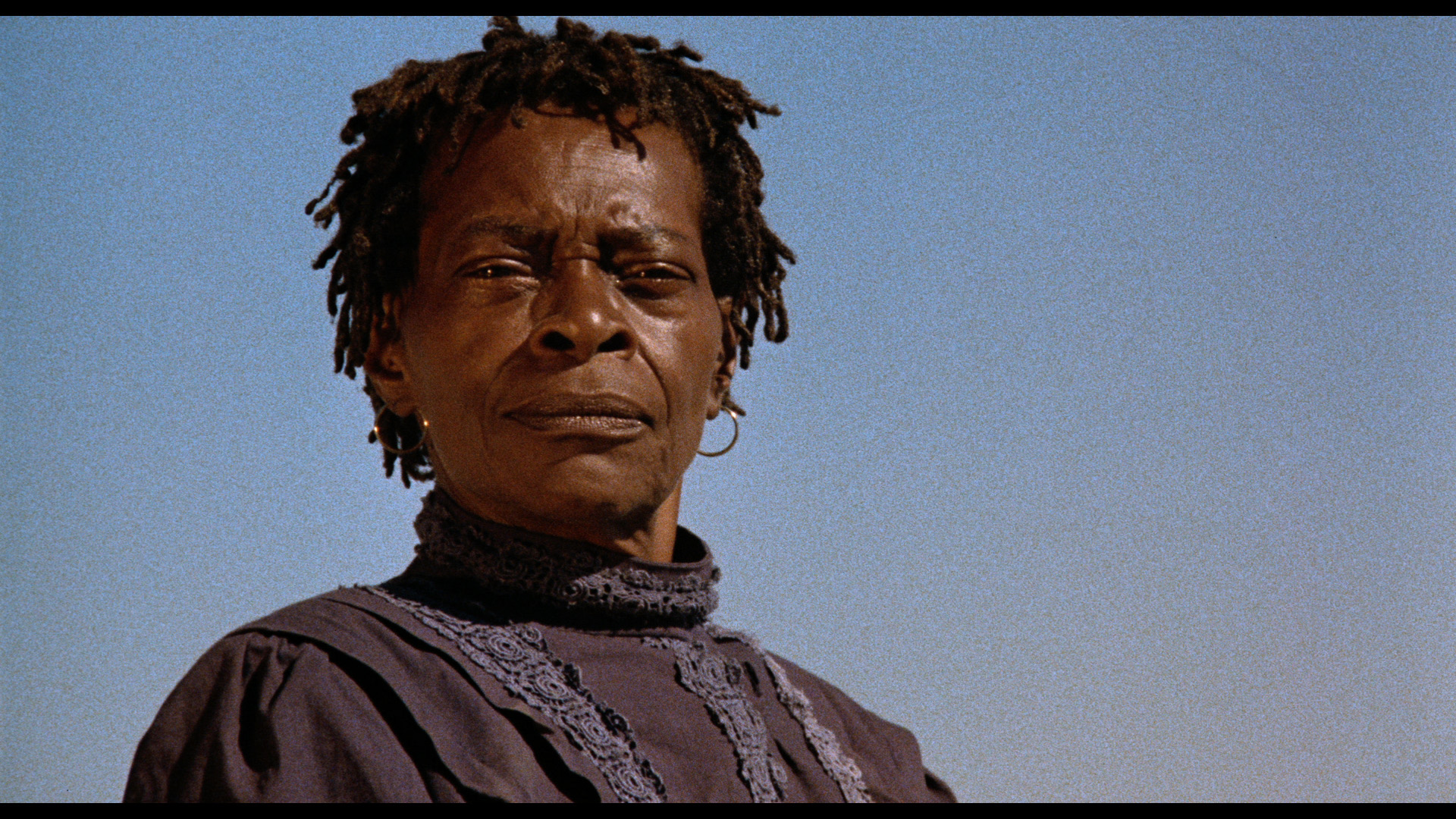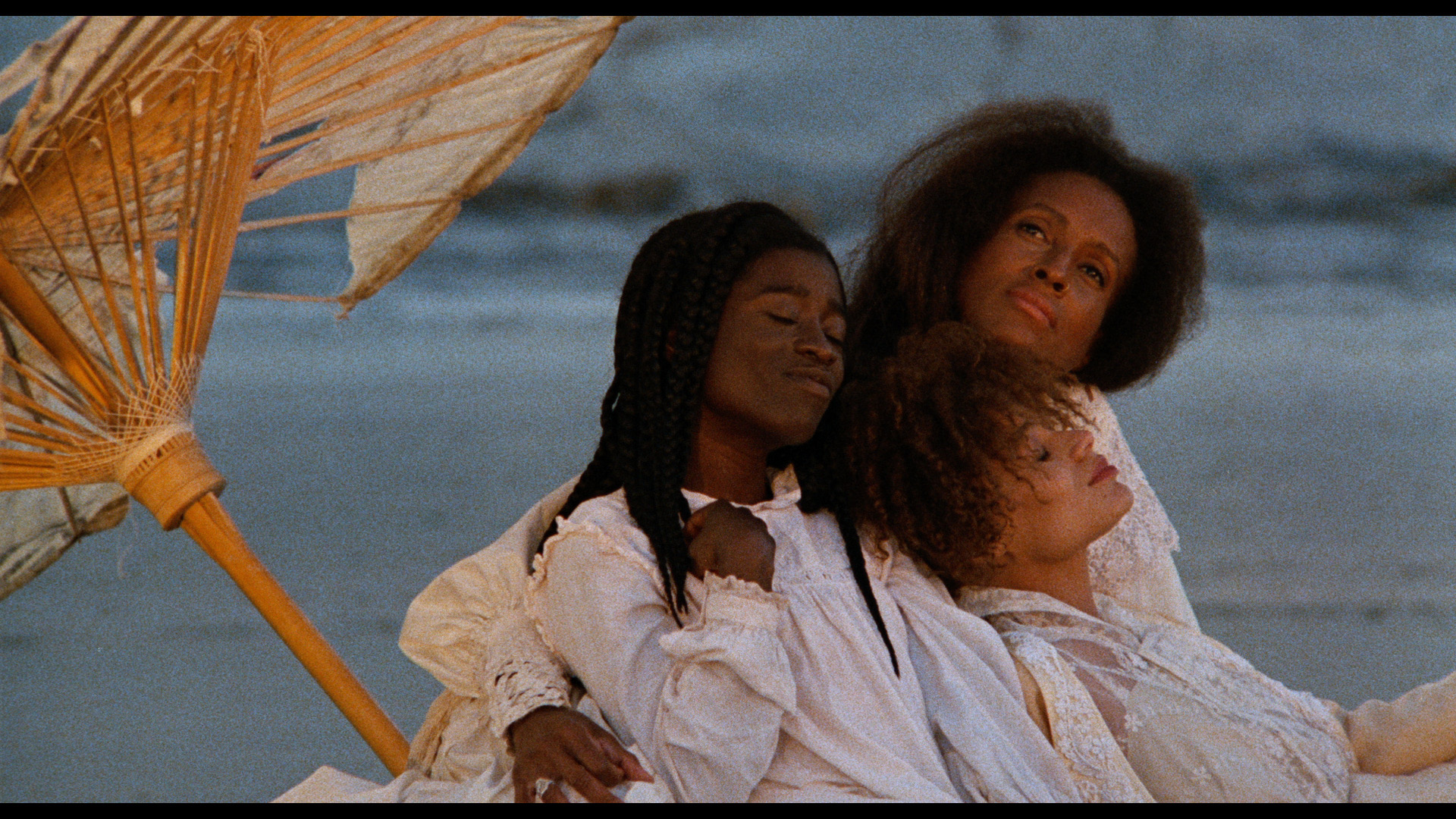Trula Hoosier as “Trula” (top), Barbara-O as “Yellow Mary Peazant” (right), and Alva Rogers as “Eula Peazant” (bottom) in Daughters of the Dust directed by Julie Dash. Photo courtesy of Cohen Film Collection
Last week, I nervously sat down to interview a jet-lagged, but recovering Julie Dash the day after her arrival for the CinemAfrica 2017 film festival in Stockholm.
Julie Dash first released her highly original and influential film “Daughters of the Dust” to wide critical and public acclaim in 1991. It became the first film by an African-American woman to get a general distribution deal. In 2004, “Daughters of the Dust” officially became a part of the U.S. permanent cultural canon when it was taken into the prestigious National Film Registry by the Library of Congress. The film was re-released last year and again became one of the must-see films of the year.
Julie Dash embodies the fighting spirit of black women. That spirit that keeps us doing our thing, holding on to our ambitions in the face of rejection, neglect and what is expected of us. She has collected accolades in an industry that is notoriously hard on women and black women in particular. She has survived the film industry for over 25 years and her seminal work “Daughters of the Dust” have come full circle and is relevant to a new generation of black women the world over, thanks to Beyonce’s Lemonade drawing heavily from the visual language of the film.
Julie Dash changed how we saw black women in film.
The story of the film is set in 1902 and centers on one day in the life of four generations of women in the Peazant family who live on one of the Gullah Islands off the east coast of the US. It’s a story of a pivotal post-slavery moment, when each member of the family must decide whether they should stay on the island or join the Great Migration of African-Americans to the North. Dash provides us with graceful and intimate tableaux allowing us to simultaneously understand the historical event and the personal choices each family member has to make.
“It’s not smooth sailing all the time and it’s not all the time a rocky road”
FILMMAKING – TECHNOLOGY & THE NEXT GENERATION
I am a photographer and what I remembered most about your movie from 1991 was that it was so visually gorgeous. The way you were not afraid of color or composition. Can you speak a little bit to that?
I studied a lot of photographers like (James) Van der Zee and P. H. Polk, and I was influenced by other films like Ganja & Hess. In this particular film, I felt that memory was a character so I wanted to create living tableaux, like looking through a family scrapbook. So, there was a lot of wide angles – it was not shot for television – with people in repose. Kind of very impressionistic and stylized. Almost like living still pictures.
Your production designer, the artist and painter Kerry James Marshall, who has blown up now, was key to that?
Yes, and cinematographer Arthur Jafa (AJ)
With the new print, has anything changed? Have you added anything or taken out anything?
I didn’t edit anything. We just brought the colors back to the way they were supposed to be. We originally shot on super 35mm film with Agfa-Gaevert negative, but the release print was on Eastman Kodak, so the colors were lost. Agfa-Gaevert reads warm in the shadow areas. Kodak film stock is blue/green in shadows. It reads black people as shadows, so they look blue or green. Now that it’s in a digital space, we were able to dial up the colors and make them come back to the way they were supposed to be. Now there’s more vivid colors and you’re better able to see into the faces. So, I’m much happier now. I just thought it was very murky before.

Cora Lee Day as “Nana Peazant” in Daughters of the Dust directed by Julie Dash. Photo courtesy of Cohen Film Collection
Maybe this film was ahead of its time and the technology needed to catch up with you?
That too! And the style of the film. We were very much trying to do something that was foreign to American eyes vis-à-vis African-American film. People could watch a French film or even an African film and say “Oh, yeah.” But when it came to African-Americans, everyone was in lockstep – you had all the same elements – you sing a negro spiritual, the harmonica plays – so we were like “no.”
You teach now. With all of this knowledge about how the system works, how do you approach teaching?
I try to encourage my students to have an authentic voice. To be prepared to work on their own and to work with like-minded people, friends, crew, talent. And not to worry about what others are saying about their film work, but to stay focused and to make the films you want to make. Don’t think that you could just buy a ticket and go out to Hollywood and just because you’re a damn good filmmaker that you are going to be hired to do anything or that your film will be financed, because they deserve to be or because they are equal to anyone else’s film. That is not how it works.
Has teaching influenced your filmmaking?
It’s kept my interest. It’s kept me inspired. I’m really eager to help young filmmakers find their own path on this journey and to make them aware of the pitfalls and the minefields so that they don’t drop out of it. It’s not smooth sailing all the time and it’s not all the time a rocky road.

Alva Rogers as “Eula Peazant” (left), Trula Hoosier as “Trula” (center), and Barbara-O as “Yellow Mary Peazant” in Daughters of the Dust directed by Julie Dash. Photo courtesy of Cohen Film Collection
In Sweden you can catch “Daughters of the Dust” at Cinematekets Malmö våren 2017






1 Comments
Paulette Bell
I really enjoyed the article on Julie Dash. I look forward to seeing this newest release of Daughters of the Dust…in vivid color!
Thanks Andrea, for a very informative series of interviews.